Future ourselves, scenes
The impetus for the project, ‘Future ourselves, scenes’ evolved over a number of weeks, while at home, thinking of ways to connect with other artists, who too, would be reflecting on the pandemic and how it has immersed us all one way or another. Tilting our experiences and perception of time, during this existential crisis. A creative remedy, as it were, a heartening idea and plan to anchor a distinctly strange experience.
‘I’m okay, how are you?
Thanks for asking, thanks for asking
I’m okay, how are you?
I hope you’re okay too’
What time is it?
I invited nine other artists, whose work I find compelling to have free play and consider the ambiguity of imagining another nearby, a new future. How would they each envisage this fragile unknown? How will it would it be different to now?
What to make of all this?
Each day would bring more and more news of the global pandemic, a cacophony of information. Progressively we began avoiding places once shared with strangers or any environment that could possibly subject us to a chance encounter. We were ordered to remain in self-confinement, in our homes, leaving only for brief periods of time. The place I live in very abruptly became my everyday place, in which to work, learn, celebrate, and lament and just more-simultaneously.
The implications of everyday objects, a medley of books, music playing, news, instagram, cooking, gazing, cups of tea, the furniture looks dusty… Fuelled by the changed circumstances we are in, I began looking back in time as a way of moving forward. A re-discovery, of books on my shelves about modernist counter culture. The pages fragments of ideals and propositions that although dated and somewhat misplaced, leave traces in contemporary life. Utopia like any tool, is conjured from a future, but it is destined to remain, just out of reach of the technological self.
“It is not possible yet to make and live in a new society; but it is possible to catch a glimpse of what it could be like, to sketch out a model of future possibilities”
As I left my house and entered the street, I would see people walking, a remote collective surge, striding purposely along streets or roads, disappearing into their houses and other unknown places.
An un-dreamy space.
A brief moment of togetherness
The jostling surging swell of a crowd, erupting, filled with a tremulous joy, anticipation, the shifting motion, a quick cut, then freeze framed. The urban symphony of traffic clatter, lulled. At night just before curfew, the street would settle, the night felt out of step, becoming an abstracted site for other explorations. The suburbs and the city stilled, hushed and suspended.
‘Future ourselves, scenes’ proposes a temporary complicity, looking at seemingly random elements and connections amongst the artists and works created. The artworks hopefully present and conjure for the viewer, some compelling observations and tenuous possibilities, to consider a different time or at least an alternative proposition.
I have a desk adjacent to a large window where I look out upon a small garden. During the past months the garden has been inhabited by an array of birds. A subdued Boobook owl, a frequent visitor, for reasons that are yet intangible, the owl’s arrival and departures, create a sense of sheer joy and wonderment.
Rozalind Drummond, October 2020
REFERNCES
Palo Alto, lyric excerpt, 1997, written by Thom Yorke, Radiohead
The Heaven and Hell Issue, BOOK FORUM, Volume 27, ISSUE 2, Jun/July/August 2020
Stuart Hall, “The Hippies: An American Moment”, Stuart Hall, Merlin Press, 1969, Hippie Modernism, The Struggle For Utopia, Walker Art Center, 2016
Nadine Christensen, represented by Hugo Michell Gallery, Adelaide
Yanni Florence, represented by Reading Room, Melbourne,
T.C Mac (Travis Macdonald) represented by Niagara Gallery, Melbourne,
Mark Rodda, represented by Gallery 9, Sydney.
Nadine Christensen
As artists we amass source materials and try to identify their connections, cuts, hinges and entanglements.
I’ve contributed two photographs for Future Ourselves, Scenes. A tracing in red pencil of a photo, of an upturned and crumpled box, of a game of Jenga. And, an electrical extension cord, ossified in globs of acrylic paint, hung high on the studio wall, lit with exposed fluoro lights. Both images have endured as material, support, touchstone – in my studio for some time, years actually. These works seem to embody the entwined experiences of boredom and anxiety that I associate with Covid 19. I might be reading too much into them, but they also resonate for me with the background noise of everyday life and painting; the mess, the constraints, the inefficiencies and the accumulations.

Nadine Christensen, Cord, in studio (2018/19), Photograph, dimensions variable.

Nadine Christensen, Tracing Paper (2020), Photograph, dimensions variable.
Ruth Cummins
‘Weighted Blanket’ is a speculative textile, made as an alternative to the popular therapeutic blanket of the same name.
Rather than the velvety surfaces and plastic pellet interiors flashing in Instagram ads, ‘Weighted Blanket’ is made out of old t-shirts, recycled textiles and rocks. Weighing in at approximately 17kg the work pushes the lines of comfort and pressure, sitting somewhere closer to a weight trainer than a therapeutic friend.
On one hand, ‘Weighted Blanket’ asks whether our future selves will still crave the same lifestyle products of today. As further implications of the global health crisis set in, will we return to our sewing baskets/craft cupboards to replicate the self-care hero’s we no longer can afford?
Perhaps more so, ‘Weighted Blanket’ is a poetic consideration of future daily life. The future demands us to be more resourceful and more willing than ever to work within discomfort. Weighted blanket is a nod to our changing routines and preparedness to cope with uncertainty within ever mounting pressures.
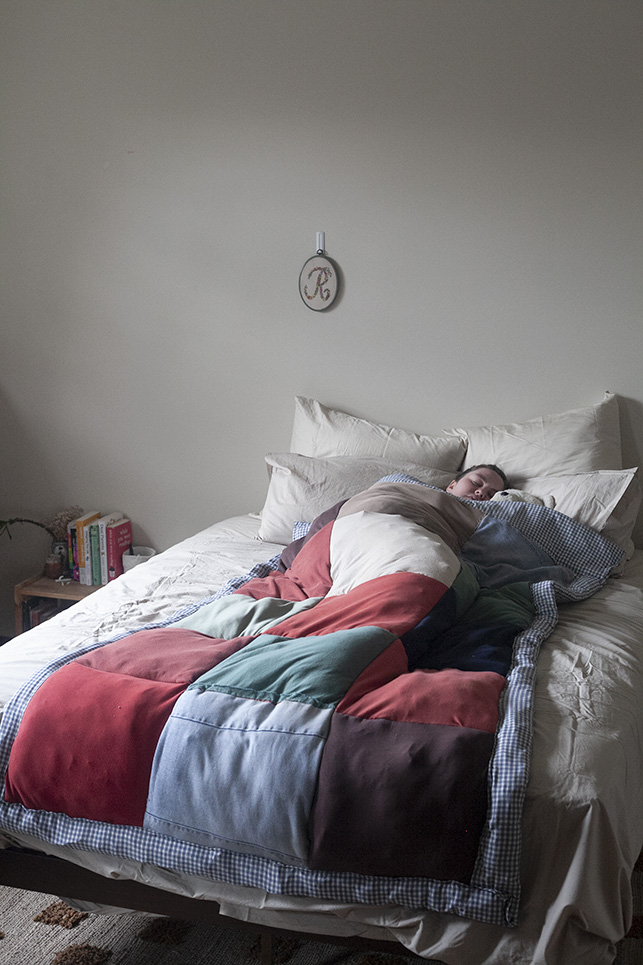
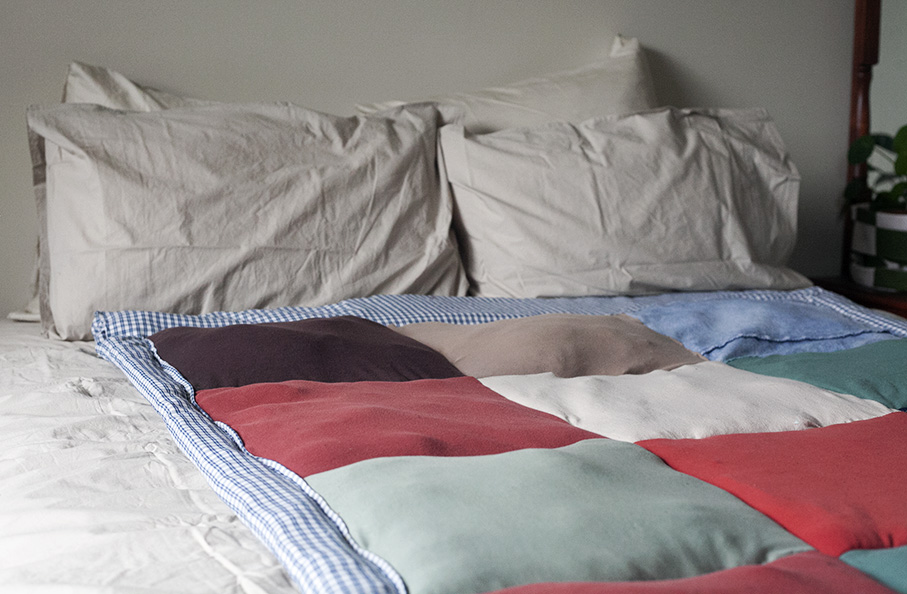
Ruth Cummins, Weighted Blanket (2020), 112x 186cm. Artist’s t-shirts, jeans, recycled cotton, wadding and rocks collected within artist’s 5km radius. Photograph courtesy Kenneth Suicio.
Rozalind Drummond
A distinctive landscape, suspending a view ahead, two people disappear, inside a small doorway. The light and air seemingly, is brilliant and crisp.
An unadorned observation, imagining this space and its surrounds and how time does fold backwards and forwards.
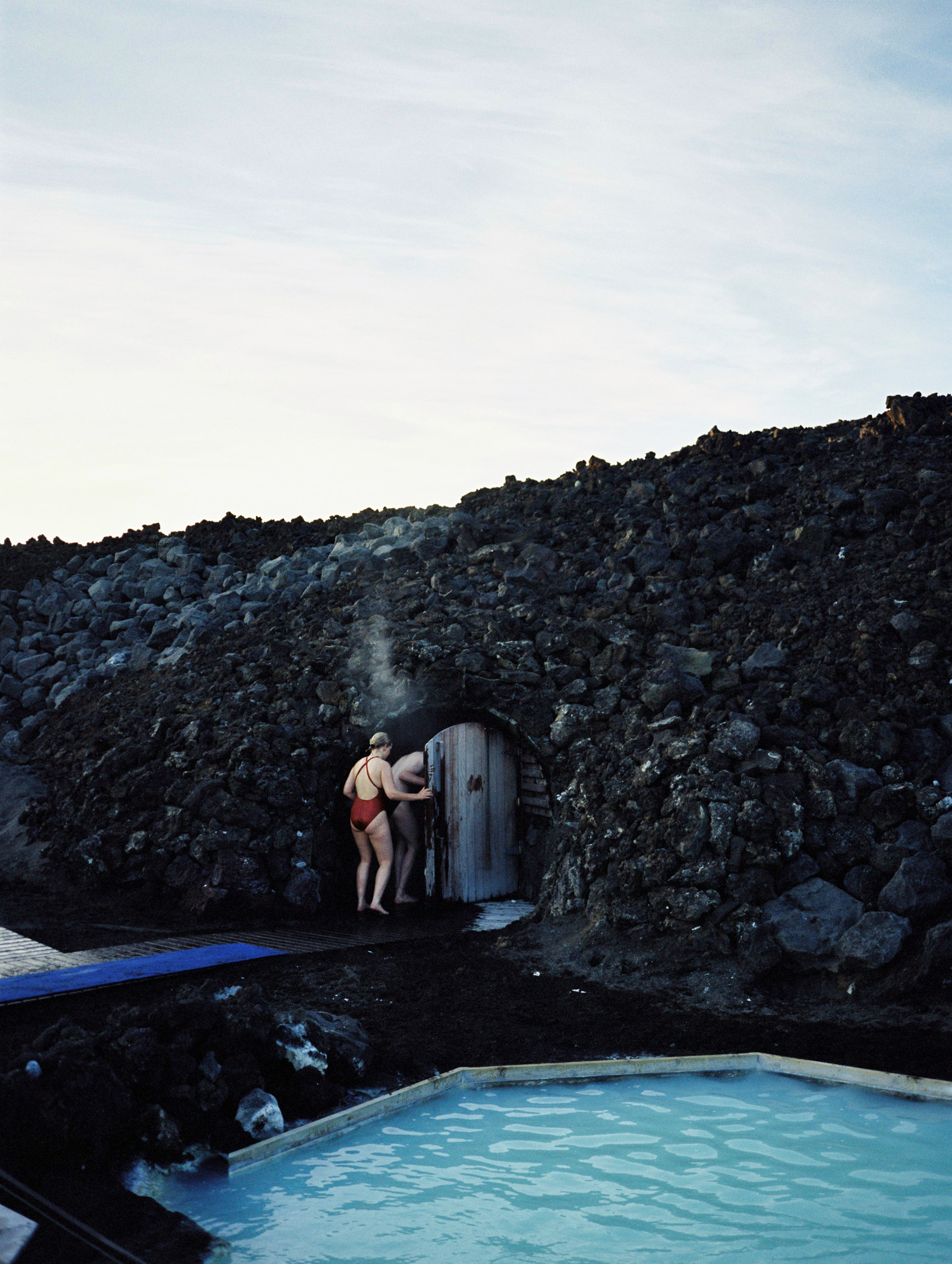
Rozalind Drummond, The Grounding (2020), colour digital image.
Yanni Florence
At the time I took this photograph I was re-reading Luis Buñuel's 1982 autobiography My last Breath. He wrote it at age 82, 1 year before he died. The first chapter is titled Memory. It is an introduction to the book that tries to qualify everything that follows. It is a charming, sad, funny, ironic, if not always successful, apology for the rest of the book. In that chapter he writes about his fear of memory loss. Something he felt he was beginning to experience all too often and from which he saw his mother suffer. His ultimate fear being "to be alive and not recognise yourself, not know anymore who you are." Towards the end of the chapter he writes: "Our imagination, and our dreams, are forever invading our memories; and since we are all apt to believe in the reality of our fantasies, we end up transforming our lies into truths. Of course, fantasy and reality are equally personal, and equally felt, so their confusion is a matter of only relative importance."
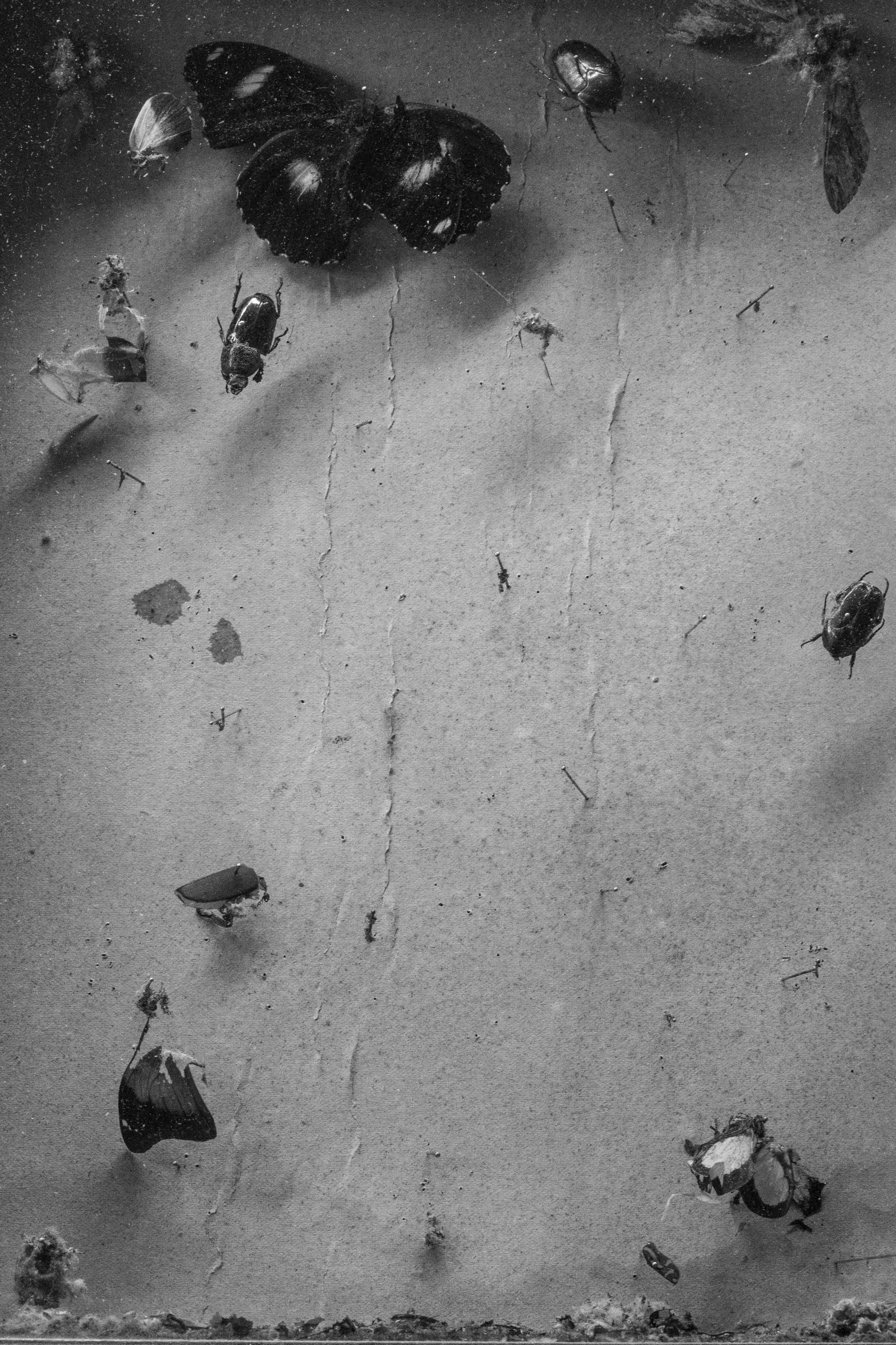
Yanni Florence, Untitled (2020)
Elein Fleiss
Today is the autumnal equinox. The last hazelnuts are falling on the ground, as well as the first walnuts. This morning I watched dozens of swifts flying in the rain. The small pond in my courtyard is now filled to the top. Soon there won’t be any flowers to pick. The leaves will fall, oak trees will be the last to let them go. Naked branches will reveal a new sight. It will freeze and rose hips will be ready to be picked. Then spring will come back, nature will become green again, many wild herbs sprouting from the ground, as well as flowers, violets and lesser celandine at first, and dandelions, dwarf periwinkles, daffodils… Spring will be enchanting, before the heat comes, and the fruit : plums, blackberries, cornelian cherries. This is the only future I can envision.

Elein Fleiss, Untitled (2020)

Elein Fleiss, Untitled (2020)
Anna Jankovic
Restricted to private dwellings and our digital spheres, our social and public lives have diminished. Our sense of time is heightened as we follow a similar, at times acute, daily routine; now more clandestine and bound by our interactions with things, not people. Coupled with time, we have a heightened sense of our surroundings; the timber awning window with an outlook, the door to the bathroom with its turn-lock and oval-shaped handle, the old bentwood dining chair from hard-rubbish now only good for holding the growing stack of Saturday’s newspapers. When considering the future of what our physical environment might be post-pandemic, it seems necessary to consider the nature of time in our built environment.
We often fail to recognise and interrogate the embedded histories in the fabric of the everyday. Formed on an accumulation of architectural elements (ie. windows, doors, toilets etc); the banal to the extraordinary, the obsolete and the emerging, the standard or the few things that can claim to be original, perhaps even unique(1). Architecture continues to be in tension between unyielding persistence and constant change, which is particularly of interest here(2). These elements carry qualities established thousands of years ago, while others have undergone recent and radical shifts. This interesting tension between new and old, the contemporary and archaic, is not often recognised, nor celebrated.
It is an ingrained characteristic of our contemporary society, that we should value either the ‘new’ or the ‘old’; the former being synonymous with ‘innovation’ and ‘progress’ and thus proclaimed to be good, without acknowledging the conformity that arises from the behaviours of economy, production and technology, nor the problems of waste and the increasing limitations of finite material resources. This binary distinction also prevents us from reading the field of variations that exist between. We tend not to confront the disorderly and the ambiguous, opting instead for an erasure of time, tabula rasa, not the palimpsest. We are conditioned to recognise and categorise things as either, accepted ‘heritage’ belonging to a particular time, or that which presents as novel.
By comparison, the timber buildings and structures at the Ise Grand Shrine (in the Mie Prefecture of Japan) are ceremoniously rebuilt every 20 years, symbolic of the Shinto beliefs that centre on nature’s impermanence, its decay and renewal. In this cyclical process, the ‘new’ shrine is constructed next to the ‘old’, that acts as the model or code for recreating the object identical to its antecedent. In this way the shrine is a perpetual copy, neither can be considered an ‘original’. But we can also recognise it as the same object everlasting and in a constant cycle of renewal. It is only at this moment of re-making that time can be read - when both ‘old’ and ‘new’ co-exist side-by-side; one in decay yet to be dismantled, the other emerging. When the past and future are made visible, as if on either side of a mirrored plane.
In an act of subverting time, the Turkish Cypriot Australian artist Mutlu Çerkez (1964-2005), developed a system for dating his artworks that formed the basis of his practice. He incorporated a future date into the work’s title alongside that of when it was made, marking out a point in time for it to be re-made; or repeated, though not necessarily in its original form. Questioning the ‘evolutionary model’(3) of art and many of its conventions, Çerkez sought to compress the otherwise hierarchical classification of an artist’s works as; minor or major, early ‘formative’ or later ‘mastery’. In deconstructing the conventional linear timeline, each artwork was given equal significance, signalled to reappear and be remade at a later date, challenging whether the artwork is of a particular time or should be considered finished.
Furthermore, Çerkez’s interest in bootleg recordings; both recordings of his own making and the repeated album covers he made to accompany found bootleg recordings of Led Zeppelin; disregarded copyrights, speculated on authorship and questioned the value granted to the ‘original’. Analogous to the remaking of the Ise Grand Shrine, these illicit recordings were “repackaged over and over; as bootlegger bootlegged bootlegger”(4).
In this regard, it is the accumulation of the artist’s works that is the subject. Similarly, Architecture should be thought of not as a complete or singular object or of a particular time, but rather one that is accretive and in a state of flux; something that will continue to be changed, adapted and re-made over time. We should embrace that which exists between ‘old’ and ‘new’; things which are de-constructed, re-constructed and the perpetually in-complete.
REFERENCES
1 Markham, Michael. 1995. “Originality.” Transition (RMIT Publishing) (47): 36-45.
2 Koolhaas, Rem. 2014. “Elements of Architecture.” In Fundamentals, 14th International Architecture Exhibition, 193.
3, 4 Çerkez, Mutlu. 2018. “Lecture, Victorian College of the Arts.” In Mutlu Çerkez 1988-2065, 7-10. Monash University Museum of Art.
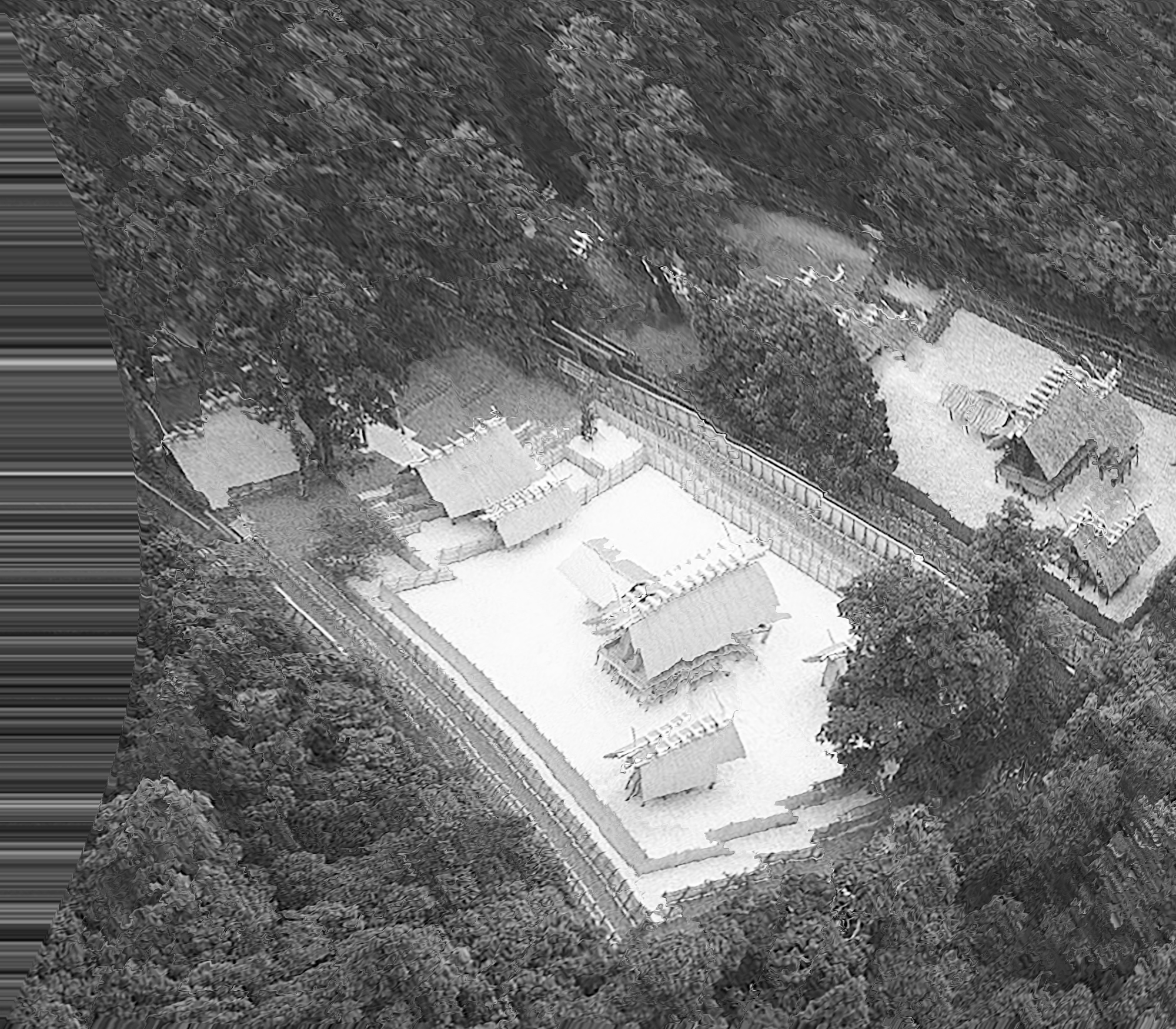
Anna Jankovic, Passing Time, (2020)
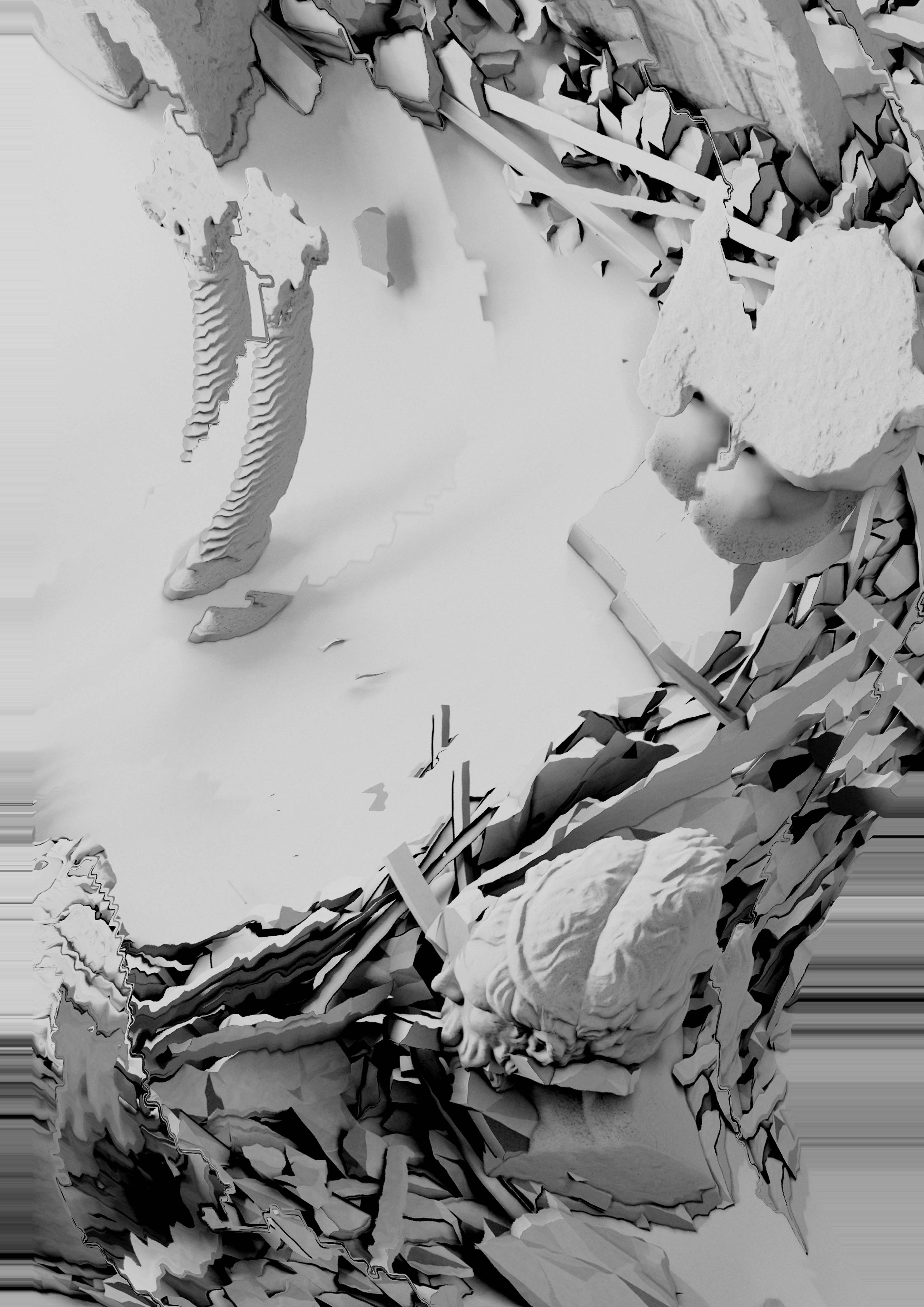
Anna Jankovic, 23 February 2021, (2020)
Jacob Raupach
what seems possible
at any point in the social field, is defined by a series of political
determinations.
we now question how certain human
practices and ideologies have become naturalised,
as if they are forces that can’t be changed,
that are part of the nature of things.
An ideological position can never be fully successful
until it is naturalised, and it cannot be naturalised while it is still thought
of as a value
can we turn something seen as a value into a fact?
We must inhabit our history differently
Just try to
fold back
across time,
not because the moments of past and present are
the same
but because visual and material links between them
may reveal worthwhile aspects of the present from shadows of
the past.
turned inside-out, oriented in their tissues toward
the material world,
from which they derive all their sustenance, and
they are rooted in place, exposed to whatever happens there, where
they are.
We must live with our _____ differently.
all our sustenance from the material world
and are also in some sense rooted by our physical bodies and by
the Earth’s gravity and specific atmosphere
with which we evolved
…the real mythologising which occurs here is in the invention of
a point of view, a panoramic eye before whose gaze
the historical facts unfold again exactly as before.
land as both abstract space
and tangible material
visiting
_____, where land as space and material becomes
explicitly commodified — turned into an object.
Define yourself in response to what is already established;
Tradition counts for nothing when it is no longer contested and modified.
There is a problem -
our representations of the world are so imperialist
the
remains of history after time are fractured,
a sidelong glance at totality.
The colonisers
were making spatial history.
they were choosing directions, applying names, imagining goals,
__ the country.
Landscape might be seen more as
a dreamwork of imperialism,
unfolding its own movement in time and space,
from a central point of origin and folding back on itself
In short, the
posing of a relation between imperialism and landscape
is not offered here as a deductive model that can settle
the meaning of either term,but as a provocation to an inquiry
The question is,
How do you value a landscape you cannot read?
Maybe, things must recover their distinctness?
This ___ exists in monolithic, indivisible continuity with all other __.
No __ is separate from any other ___.
…in your eyes and in every other microcosmic part of you,
and me,all _____ converge.
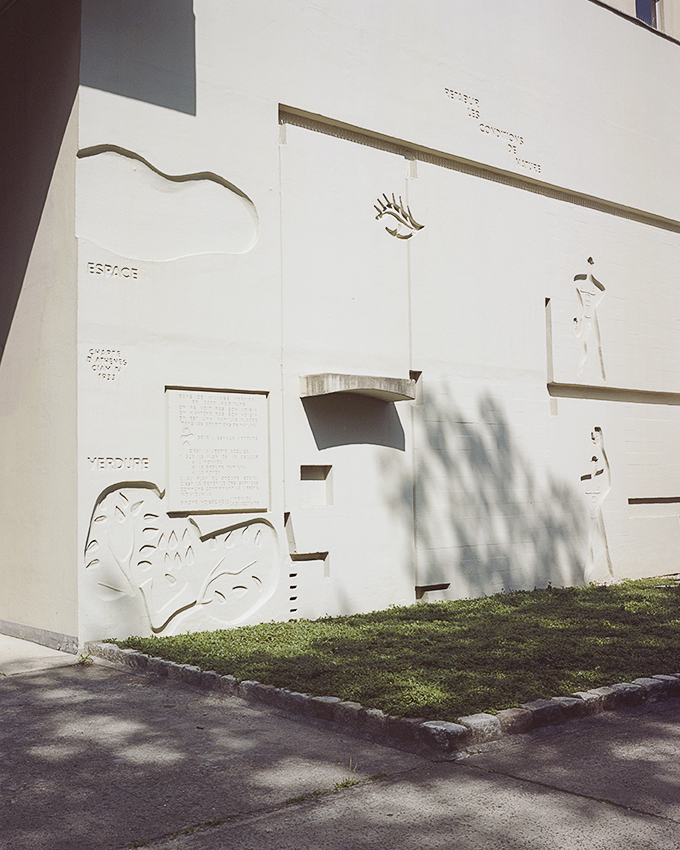
Jacob Raupach, RESTORE THE CONDITIONS OF NATURE (Le Corbusier’s unite d’Habitation, Berlin) (2020)
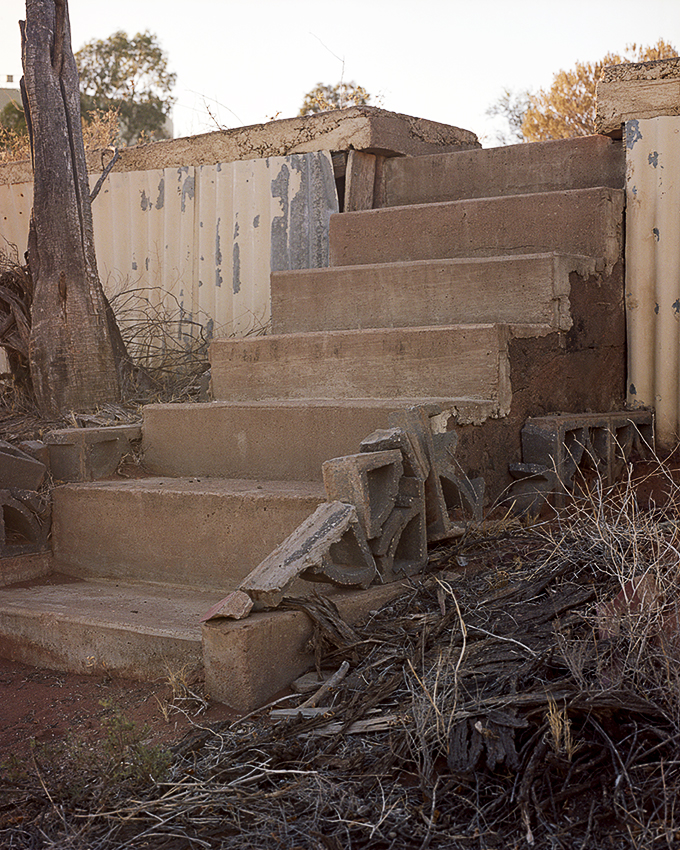
Jacob Raupach, WHAT ARE THE CONDITIONS OF NATURE? (Broken Hill, NSW)(2020)
Mark Rodda
I've given up trying to predict the future, I've been proven wrong so many times in both negative and positive ways. It seems I simultaneously underestimate and overestimate the human race.
I think the pandemic is a return to what used to be a normal situation for human civilization, a palpable fear of disease. We will recover and hopefully there will be some positive outcomes out of this very tragic situation.
To me the real problems are climate change, nuclear weapons, and the unfettered power of billionaires in society. Billionaires are the new feudal kings and queens of our age and I fear they are so powerful now that they may never be brought to heel.
I am hoping that with more knowledge and information humans will make better decisions in the future, but as we've seen that can also backfire in unpredictable ways.
Finally but probably most importantly there should be far more women in power, the trickle down effect of this will improve countless other issues in society.

Mark Rodda, Gordian Knot (2020), Synthetic polymer on wood panel, 29x30cm
Travis MacDonald
A MYSTERIOUS derelict dome home is driving neighbours mad but Yarra Ranges Council says it can’t do anything about the abandoned property.
Retirees Alex and Phyllis Murphy say they are fed up living next to the Lilydale “eyesore”.
Mr Murphy said the view from the couple’s Alexandra Rd home was dominated by the two deteriorating space age structures and the site was overgrown and rat-infested.
“We’re at our wit’s end,” Mr Murphy said.
“You can’t live next to these two ugly, large plastic domes.”
Mr Murphy said the buildings had been targeted by illegal dumpers and drug users in the past.
He said the domes’ plastic windows peered straight into his bedroom and he had been told by a real estate agent that the ugly structure would knock thousands off his home’s value.
The couple and their neighbours say they’ve battled for years to get the domes demolished but Yarra Ranges Council, which issued a planning permit for the building in 2006, said it had no jurisdiction over the property.
Director of social and economic development Ali Wastie said a council inspection showed no evidence of rats at the site or safety risks and the building’s future was now a matter for the owner.
Mr Murphy said he had complained to the Victorian Building Authority, but nothing had been done.
Authority spokesman John Rees said the private building surveyor which issued a building permit for the structures had issued a building notice to the owner a year ago asking why the building should not be demolished, but no further action had been taken.
After the Leader’s inquiries, the council confirmed it had reported complaints to the building surveyor which had agreed to issue a new building notice to the owner. The building surveyor did not return calls for comment.
Alex and Phyllis Murphy have lived next door to the derelict house for years.
Following Leader inquiries last week, the authority asked the surveyor to re-issue the order.
In the meantime, Mr Murphy said he had been told by a real estate agent that the ugly structure would knock thousands from the value of his house
“There are all sorts of characters in there, spray painting and cutting into the plastic,” Mr Murphy said.
“I heard a noisy couple who went up there to stickybeak say ‘Oh look, someone’s been smoking bongs’.”
Mr Murphy said the rats kept digging into his aviary and eating his canaries.
“I’m hitting 70 and I can’t sell because no one will buy it,” Mr Murphy said.
“It’s just a circus.”
Sam Bidey, Lilydale & Yarra Valley Leader
September 12, 2016 12:00am

Travis MacDonald, Untitled, (2020)
Shelley Lasica
Is it illegible, not quite itself ? Or perhaps it predates something, something that is just out of frame. I am pounding nothing into a careful fold, but I can’t quite be sure - it is as if something were to happen, but the potential is not so open, so full as to admit possibility. Rather it is a setting forth, a figuring.
Shelley Lasica, Not The Thing Itself, (2020), Medium variable including: Ongoing physical activity (dancing), Choreographic solutions, Written text, Video, Still images.
Artist Biographies
Nadine Christensen is an artist and teacher whose practice has painting at its core. She has been an active member of the Melbourne art community since graduating from the VCA in 1998. As well as being involved in artist run exhibitions, curatorial and publishing projects, she has held solo exhibitions in Sydney, Melbourne, Adelaide and Canberra and has participated in group shows across Australia and internationally including Tokyo, Los Angeles, Tijuana, Turin (Italy), Paris and Venice. Her work has been featured in survey exhibitions including Australian Painting Today, at Tarra Warra Museum of Art, This and other worlds, an exhibition of drawing practices at the National Gallery of Victoria; New04 at ACCA and This was the future at Heide Museum of Modern Art.
Ruth Cummins is an artist from Wagga Wagga, NSW who currently lives and works in Naarm, Melbourne. Working within the framework of textiles, painting and sculpture Ruth hybridizes objects of utility, sentimentality and the decorative. Ruth’s work uses humour and form to highlight and expose the absurdities of contemporary domestic life.
Rozalind Drummond is an artist based in Melbourne. Her work in photography video and performance explores constructed spaces, natural environments and landscape. Encompassing an abiding interest in spatiality, each body of work produced obliquely refers to spaces of socialization and how groups of people come together and inhabit locations. Since the early 1990s she has practiced as artist, teacher and curator, realizing projects in museums, galleries, contemporary art spaces, artist run initiatives and alternative art schools, both independently and collaboratively. She has exhibited widely both in Australia and internationally.
Yanni Florence is photographer and book designer. He co-founded and designed Pataphysics Magazine in 1989. He has published seven photographic monographs. His first solo exhibition, Tram Windows, was held at ReadingRoom Gallery in 2019 and his work is being included in
the 2020 NGV Triennial.
Elein Fleiss was born in April 1968 in Boulogne-Billancourt (France). Fleiss has been active as a curator, publisher, editor and writer. Since 1992 Fleiss co-founded and published Purple magazine with Olivier Zahm and from 2003, The Purple Journal, Les Cahiers Purple and Les Chroniques Purple.
In 1998 Fleiss began her photographic work. Her photos and essays have appeared in Purple, Big, Ryuko Tsushin, Brutus, Ecocolo, Here and There, Brutus, Kurachi No Techo and Home. She recently took part in the exhibition Fashion and Photography since the 90’s at Tokyo Photographic Art Museum, Japan.
Anna Jankovic is a Melbourne based Architect, Director of SIMULAA and Lecturer Industry Fellow at the School of Architecture & Urban Design at RMIT.
Jacob Raupach is an artist and publisher based in Melbourne. Jacob’s practice exists at the intersections of photographs, artist books, sculpture and installation. Through these mediums he investigates the invisibility of
labour and the relationship between natural and societal environments, and the ways in which art (work) can help to alter and rewrite our perceptions of place and history.
Mark Rodda was born in Tasmania and lives and works in Melbourne, Australia. He completed a Bachelor of Fine Art (Painting) at the University of Tasmania, Launceston, in 1994 and Bachelor of Fine Arts (Hons) at RMIT, Melbourne in 1999. He is a winner of the Glover Prize and his work is included the MONA, Artbank, and Australian Catholic University Collections.
Travis MacDonald is an artist and musician based in Melbourne, Australia. His work falls between abstraction, realistic representation, and sculpture. He creates his paints from hand-ground pigments mixed with various materials to yield a multitude of textures. MacDonald has regularly exhibited in galleries and public institutions throughout Australia. His work was featured in the 2018 Melbourne Art Fair and in 2016, in Painting. More Painting at Australian Centre for Contemporary Art, Melbourne.
For more than 30 years, Shelley Lasica has pushed the confines of dance, choreography and performance. Her practice is defined by an enduring interest in the context and situations of presenting choreography.